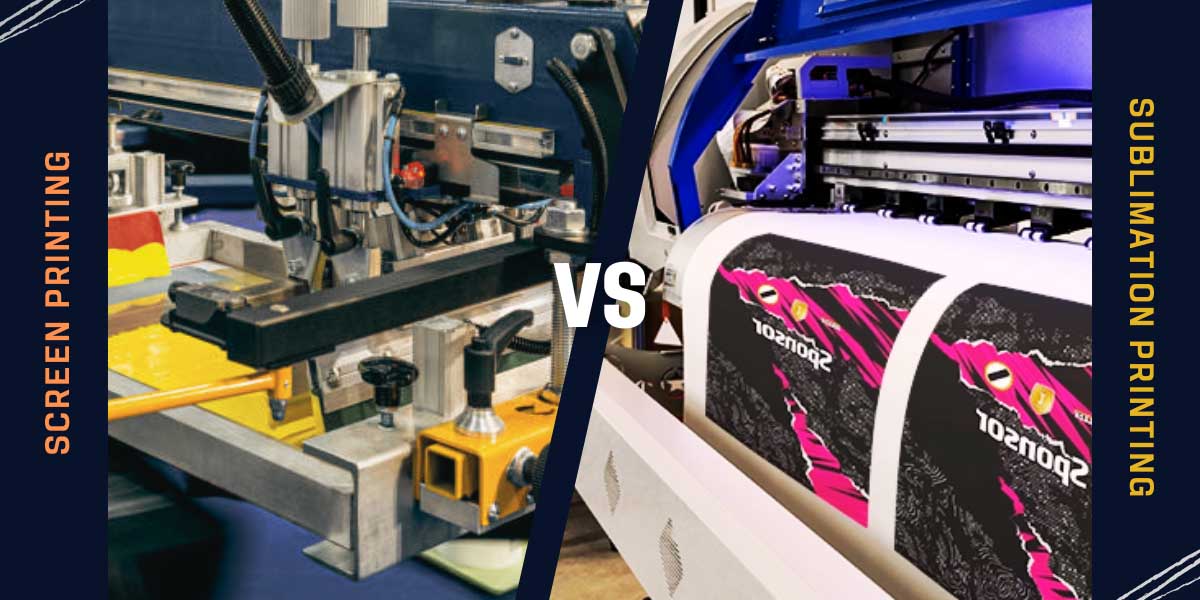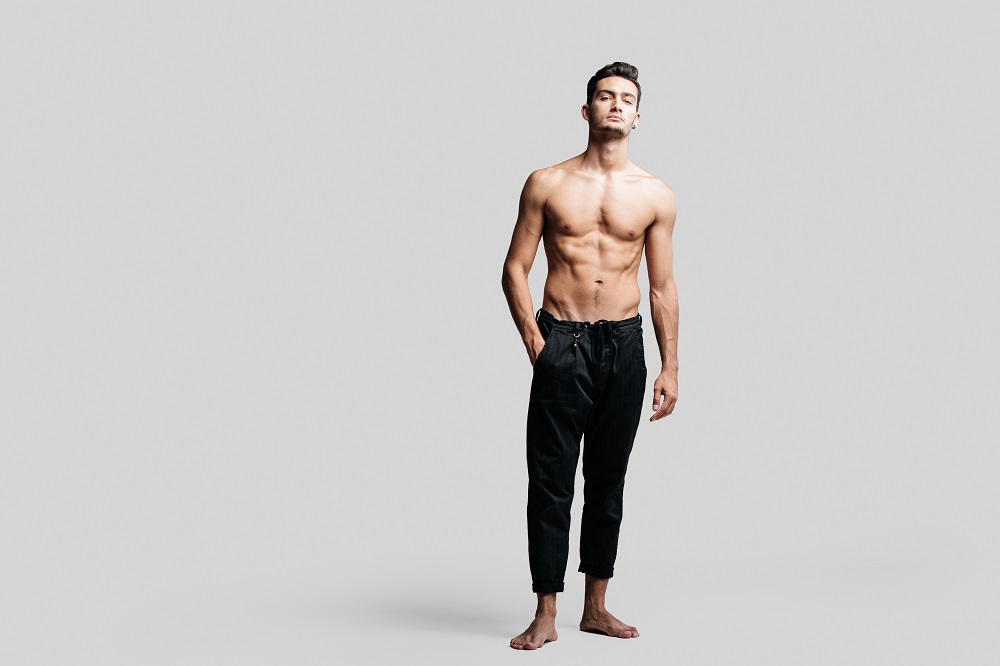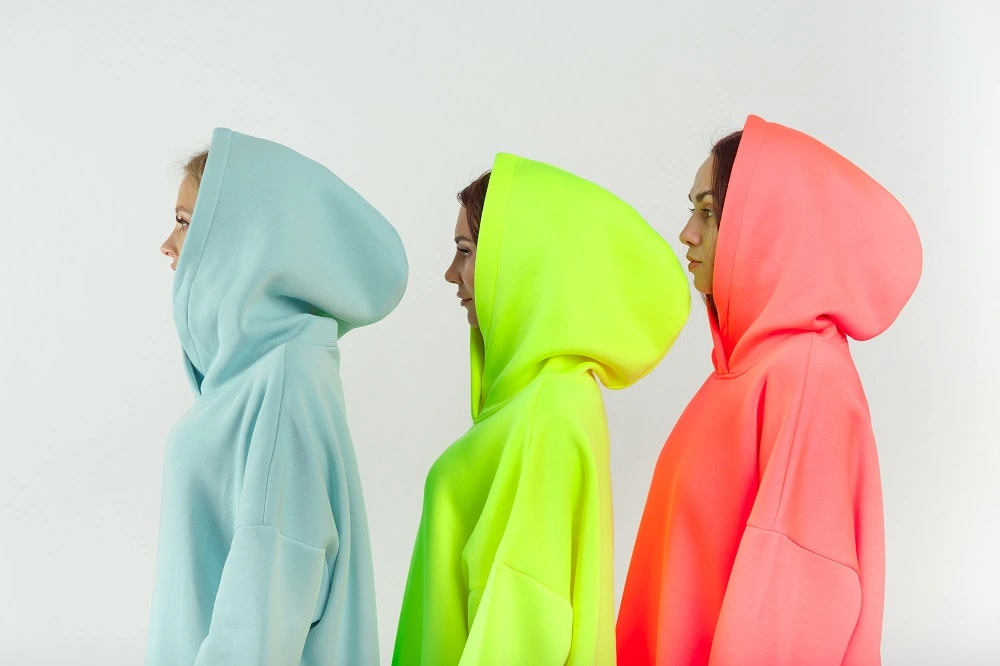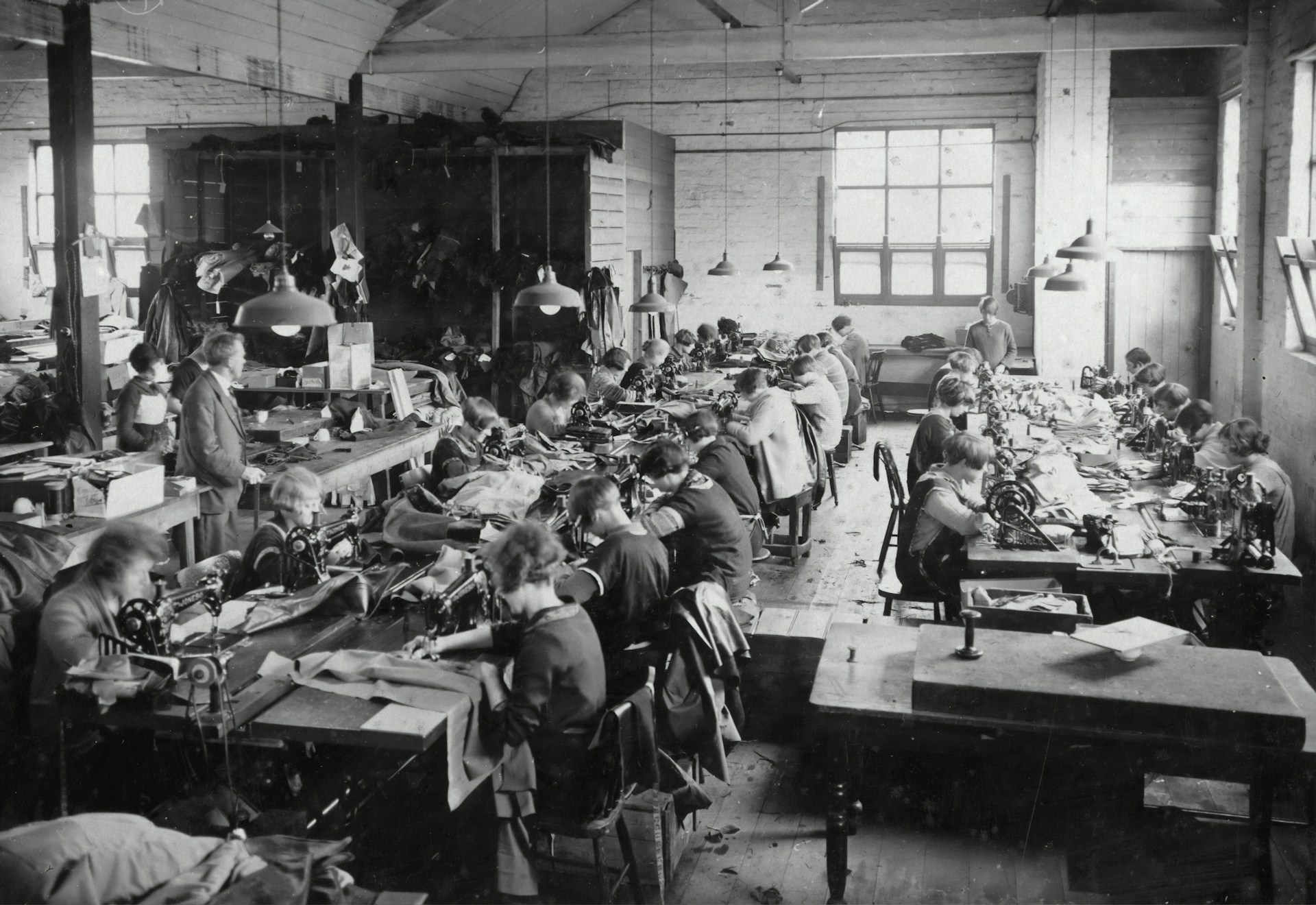Deciding between sublimation printing and screen printing can be a challenging decision. Both are commonly used methods by clothing makers, yet they produce differing aesthetics and come with unique advantages and disadvantages. In this blog, we’ll break down 14 key differences between sublimation printing vs. screen printing to help you decide which method is best for your next project. Let’s dive in!
Understanding the Basics of Sublimation Printing and Screen Printing
Before getting into the main differences between sublimation printing and screen printing, it’s important to understand the principles of each method. Sublimation printing and screen printing are both used in the textile production sector, although they use different techniques, materials, and equipment. This section will provide a basic introduction to each method, and show what is sublimation and what is screen printing, laying the groundwork for a thorough comparison.
Sublimation Printing
Sublimation printing is a digital method that involves using heat to transfer dye onto materials, usually polyester fabrics. It begins with a digital design being printed on sublimation paper with unique inks. When the dye is exposed to heat and pressure, it turns into a gas and merges with the fabric, resulting in long-lasting, colorful prints that do not change the fabric’s feel.
This technique necessitates a computer, a sublimation printer, ink cartridges, paper, and a heat transfer machine. Great for personalized clothing and branded merchandise, sublimation printing is commonly used in customized shirts, for athletic wear, cups, and mousepads because it can create intricate, high-quality, and durable designs.
Screen Printing
The traditional technique of screen printing, also called silkscreen printing, involves using stencil and mesh screens to layer ink onto a surface. Every color in a design needs its screen, causing the process to be laborious. This technique creates rich, solid, and vivid hues famous for their long-lasting quality.
Essential items are mesh screens, a screen printing press, squeegees, different inks, emulsion for stencils, and a curing unit. While sublimation printing requires less equipment, it is perfect for mass production. T-shirts, hoodies, posters, band merchandise, corporate uniforms, and promotional tote bags are some popular uses.
The 14 Key Differences Between Screen Print And Sublimation
Understanding the specific distinctions between sublimation printing and screen printing is essential when selecting the appropriate printing method for your clothing manufacturing requirements. Every approach comes with its distinct procedures, advantages, and constraints. By evaluating these crucial factors, you can make a knowledgeable choice that is in line with the needs of your project and the objectives of your business. Here, we delve into 14 key differences to assist you in making this decision.
Process Complexity
Sublimation Printing
Sublimation printing is mainly digital, making it simple and quick to configure. Digital files are utilized for crafting designs that are subsequently printed onto specific sublimation paper.
When the fabric is heat-pressed with this paper, the dye transforms into gas and penetrates the material. The straightforward nature of this procedure results in fewer manual tasks and less chance for mistakes, perfect for intricate and lively designs.
Screen Printing
On the flip side, screen printing requires a hands-on setup process. Every color in a design needs its own screen, which must be carefully prepped and lined up. The procedure involves applying emulsion to the screens, exposing them to light to solidify the emulsion, and subsequently rinsing away the unexposed areas. Completing this multi-step procedure may take a while and requires accuracy, particularly for complex patterns.
Color Vibrancy and Range
Sublimation Printing
An impressive aspect of sublimation printing is its capability to create vivid and colorful hues. The fabric is infused with dye during this process, creating deep and vibrant colors. Additionally, sublimation printing enables a wide variety of colors to be utilized, making it possible to develop detailed and vibrant designs with no restrictions on the number of colors employed.
Screen Printing
Screen printing is known for its high color opacity, providing vibrant and eye-catching colors that can easily be seen on the fabric. Nonetheless, it is usually restricted to a lower number of colors per pattern, particularly when completed in one go. Every color needs its own screen, potentially restricting the color options and increasing the complication and expense of designs with multiple colors.
Durability and Longevity
Sublimation Printing
Using sublimation printing, the dye is integrated into the fabric, penetrating the fibers thoroughly. So, how long does a sublimation print last? This combination enhances color durability against fading and washing, guaranteeing the longevity of print vibrancy and quality. Sublimated graphics have a lower chance of cracking or peeling, which makes them perfect for items that are used frequently.
Screen Printing
Screen printing provides long-lasting designs; however, the ink remains on the fabric’s surface instead of blending into it. Over time and after multiple washes, screen-printed designs may develop cracks, lose color, or detach. Although screen-printed designs are still strong, their lifespan may not be as long as sublimated prints, especially for clothing that is frequently worn.
Material Compatibility
Sublimation Printing
This technique works well with polyester textiles and polymer-coated materials. The materials are necessary for the dye to bond correctly and produce the desired outcomes. Therefore, sublimation printing cannot be used on natural fabrics such as cotton, restricting its application to synthetic textiles.
Screen Printing
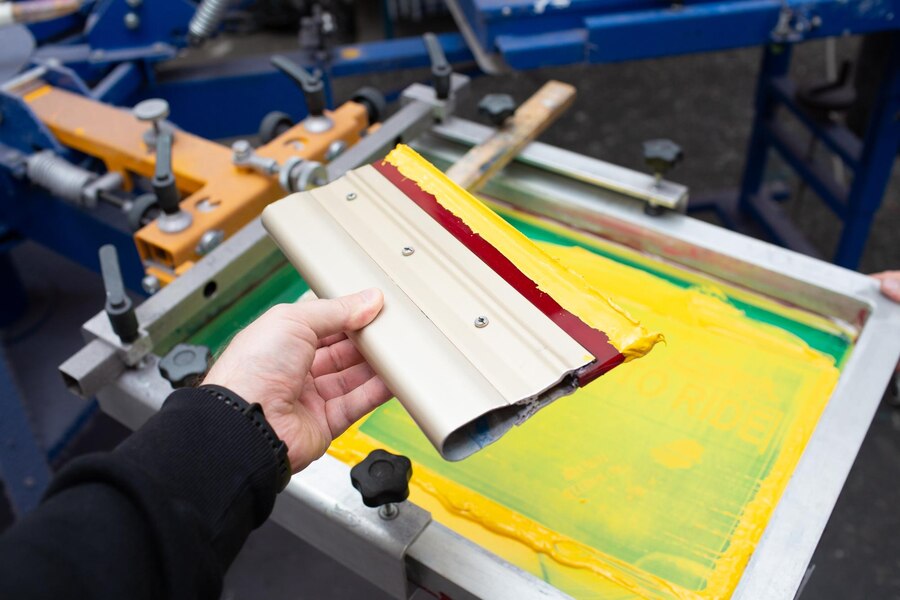
Screen printing is extremely flexible and can be applied to a diverse range of materials such as cotton, polyester, mixtures, and even non-fabric surfaces like glass or wood. This versatility makes screen printing the preferred option for various printing requirements on a range of materials.
Cost Efficiency
Sublimation Printing
Dye sublimation printing is a cost-effective option for customized orders and small-batch production. The use of digital technology results in low initial setup expenses and enables cost-effective printing of small orders without major price hikes.
Screen Printing
Although the cost of setting up screen printing might be higher at first because of the requirement for numerous screens, it becomes more cost-effective with larger quantities. Screen printing is a cost-effective option for bulk orders because large production runs lead to lower costs per unit.
Design Complexity
Sublimation Printing
This technique is suitable for intricate and elaborate designs. Sublimation printing’s digital format enables the replication of detailed patterns and a variety of colors in high resolution on fabric.
Screen Printing
Screen printing is more suitable for less intricate and more striking designs. The restricted color options and the need for manual screen alignment make it unsuitable for intricate or complex graphics. Nevertheless, it stands out in producing bold, attention-grabbing prints using a limited color palette.
Production Speed
Sublimation Printing
Sublimation printing provides fast processing for minor orders. The basic requirements for digital printing speed up production, making it perfect for on-demand printing and small orders.
Screen Printing
Even though setting up screen printing initially takes more time, the actual printing process is quite quick, particularly for large quantities, once the screens are ready. The larger the order size, the more effective and time-efficient screen printing becomes.
Environmental Impact
Sublimation Printing
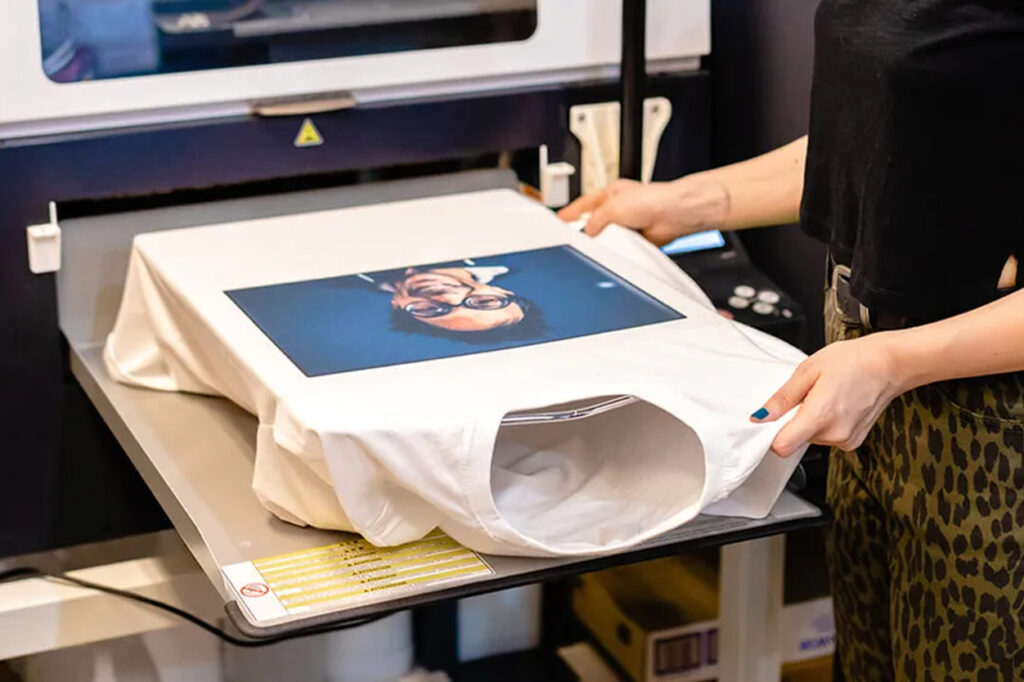
Sublimation printing is seen as eco-friendly because of its minimal waste and the use of environmentally safe inks. The digital process creates very little extra material, and the inks do not contain any harmful chemicals.
Screen Printing
The ecological consequences of screen printing may differ. Screen printing inks and chemicals typically used in screen preparation can pose a threat to the environment. Yet, the sector is transitioning to greener approaches with new eco-friendly inks and sustainable practices.
Texture and Feel
Sublimation Printing
Dye sublimation printing does not change the feel of the fabric. Because the dye integrates into the fabric, the printed sections have the same feel as the rest of the clothing, preserving the fabric’s initial texture and softness.
Screen Printing
Screen printing applies an additional ink layer onto the fabric, potentially altering its texture. The printed sections of the garment might have a raised or distinct texture due to varying ink thickness and layering.
Initial Setup and Preparation
Sublimation Printing
Minimal setup is required for sublimation printing. This process includes creating the digital design, printing it on sublimation paper, and heat-pressing it onto the fabric. This simple installation procedure minimizes the time and intricacy of preparation.
Screen Printing
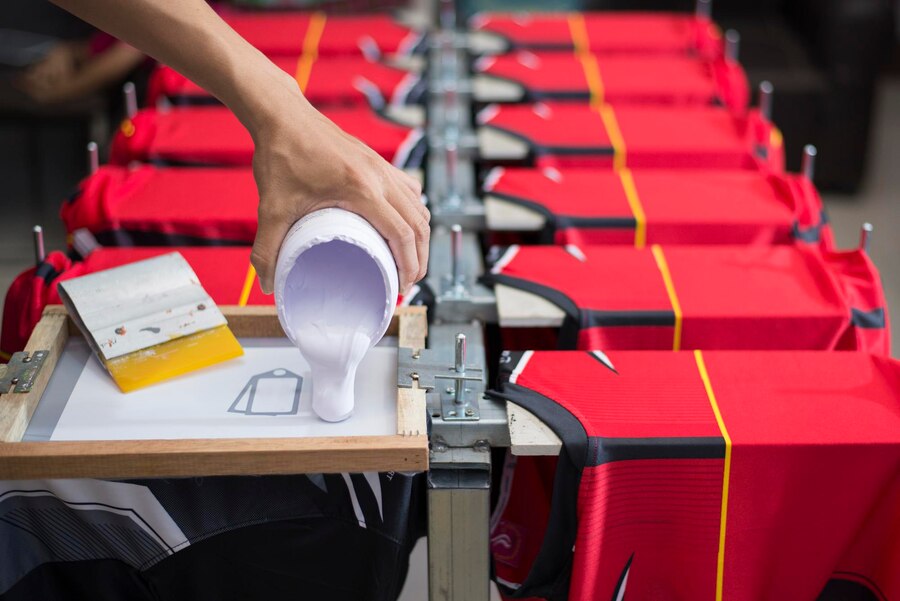
Screen printing involves a complex setup process that includes making screens for all colors, covering them with emulsion, and exposing them to light. Preparing screens and aligning them for multi-color designs may require a lot of effort and time.
Flexibility in Customization
Sublimation Printing
Sublimation printing provides a great deal of flexibility when it comes to customizing products. Digital designs are easily alterable, enabling rapid modifications and customizable prints without requiring extra expenses or exertion.
Screen Printing
Even though screen printing offers personalized options, it takes additional work to switch up the designs. Making changes to a design includes designing new screens, which can take up a lot of time and money, resulting in less versatility in comparison to sublimation printing.
Scalability
Sublimation Printing
Sublimation printing works well for small print jobs and when printing is needed quickly. Because of its digital form, it is simple to print small amounts efficiently, making it perfect for personalized orders and limited runs.
Screen Printing
Screen printing is highly efficient for large-scale production. After the screens are set up, the procedure can be expanded to manage big orders effectively, making it appropriate for mass production.
Special Effects and Finishes
Sublimation Printing
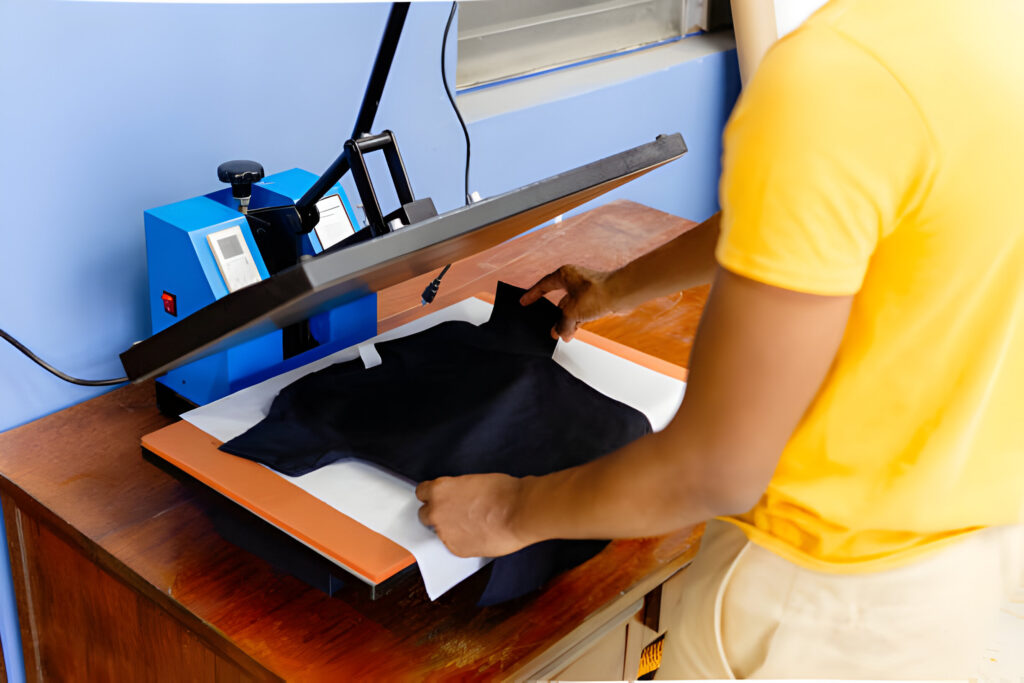
There are only dye effects available for special effects in sublimation printing. Although it can create vivid hues, it lacks extra options such as metallic or textured prints for special effects.
Screen Printing
Screen printing provides a range of unique inks and effects such as metallic, glitter, puff, and glow-in-the-dark choices. These effects can enhance designs, adding distinctive and attention-grabbing elements, and allowing for more creative opportunities.
Market Trends and Innovations
Sublimation Printing
Advancements in digital printing technology are leading to an increased popularity of sublimation printing. Continuous advancements are enhancing sublimation print’s quality, speed, and versatility, leading to its popularity among current clothing producers.
Screen Printing
Screen printing is a method that has been around for a long time and is widely used in the industry. Continuous developments in ink compositions, screen advancements, and printing methods are improving its functionality and keeping it important in the industry.
Sublimation vs. Screen Printing: What Is Better?
After comparing dye sublimation vs screen printing techniques and determining their benefits and drawbacks, let’s see which method best fits your business model.
Sublimation Printing: Is It The Right Fit For You?
Sublimation printing is a great choice for selling products through drop shipping. If your business involves selling custom-made products, sublimation printing would be a better choice. It is a widely used printing method provided by print-on-demand businesses.
Because sublimation allows for the sale of various quantities of products, you have the flexibility to print as many products as required, whether it be one or one hundred. When evaluating printing techniques, consider the appearance of your designs on items. Sublimation can transfer intricate multicolor designs, photographs, and patterns across the entire surface.
If you desire full coverage of your designs on clothing, sublimation printing is the optimal option. Finally, consider the clothing items you plan to offer for sale. Sublimation is most suitable for polyester fabric and similar fabric combinations.
Screen Printing: Is It The Right Fit For You?
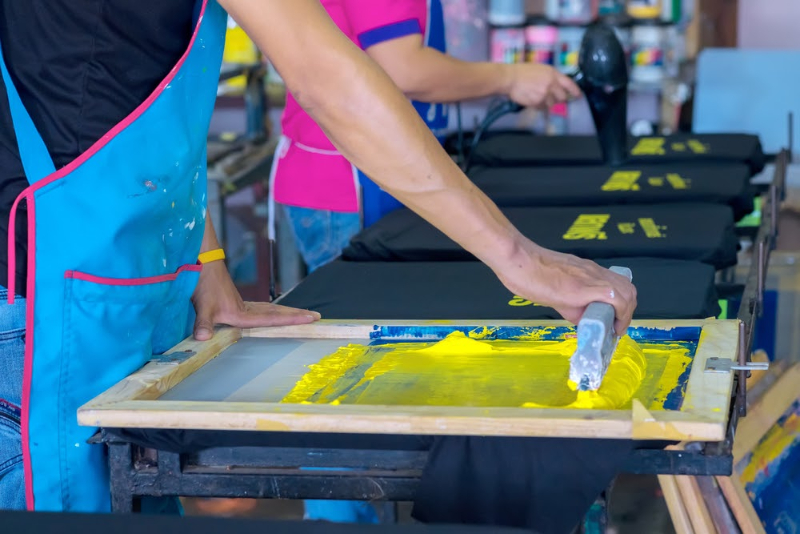
Typically, print-on-demand companies do not provide screen printing services. Nevertheless, you can attempt to locate a business that is willing to handle the screen printing and shipping of your orders with your logo. Keep in mind that using this method for only one or a couple of products is not financially efficient. The most cost-effective option is to purchase items in large quantities.
If your design is basic and only has a few colors, screen printing is a suitable option. If you enjoy the sensation of ink on clothing, you will appreciate this printing method. You have the option to enhance your designs with glitter or special inks for added appeal. Keep in mind that screen printing works best on cotton and similar fabric blends.
Concluding Your Guide to Optimal Production!
Deciding on whether to use sublimation printing or screen printing depends on the specific requirements and objectives of your project. Dye sublimation printing is ideal for custom and small batch orders, as it produces vivid, long-lasting, and intricate designs on polyester fabrics. Screen printing, characterized by its vibrant colors and affordability for extensive production, is perfect for uncomplicated, large-scale designs on a range of materials. By grasping the main distinctions, you can choose the approach that is most suitable for your business. Are you prepared to turn your designs into reality? Collaborate with Weft Apparel for high-quality screen printing and sublimation printing services designed specifically for your apparel production requirements.

